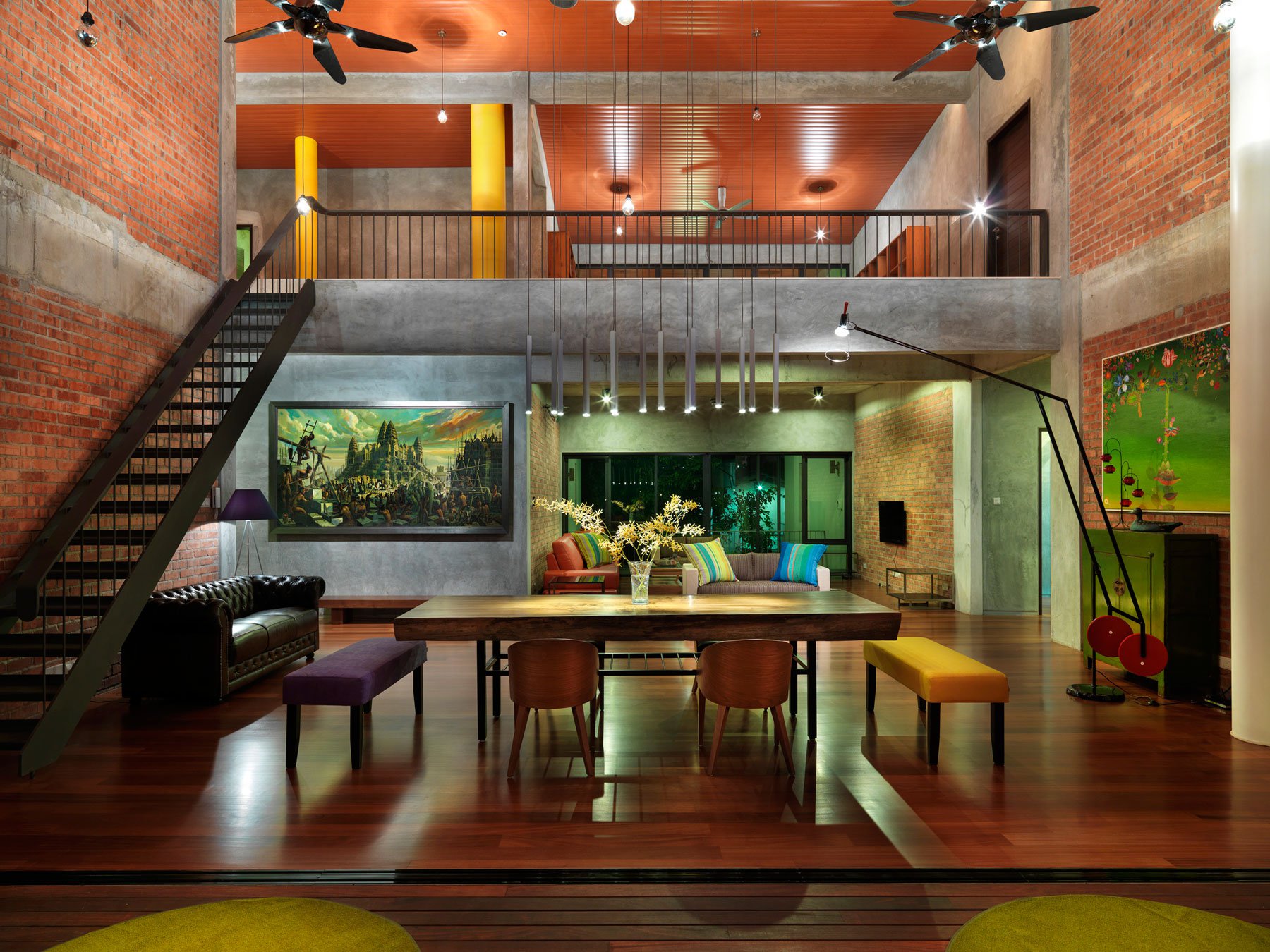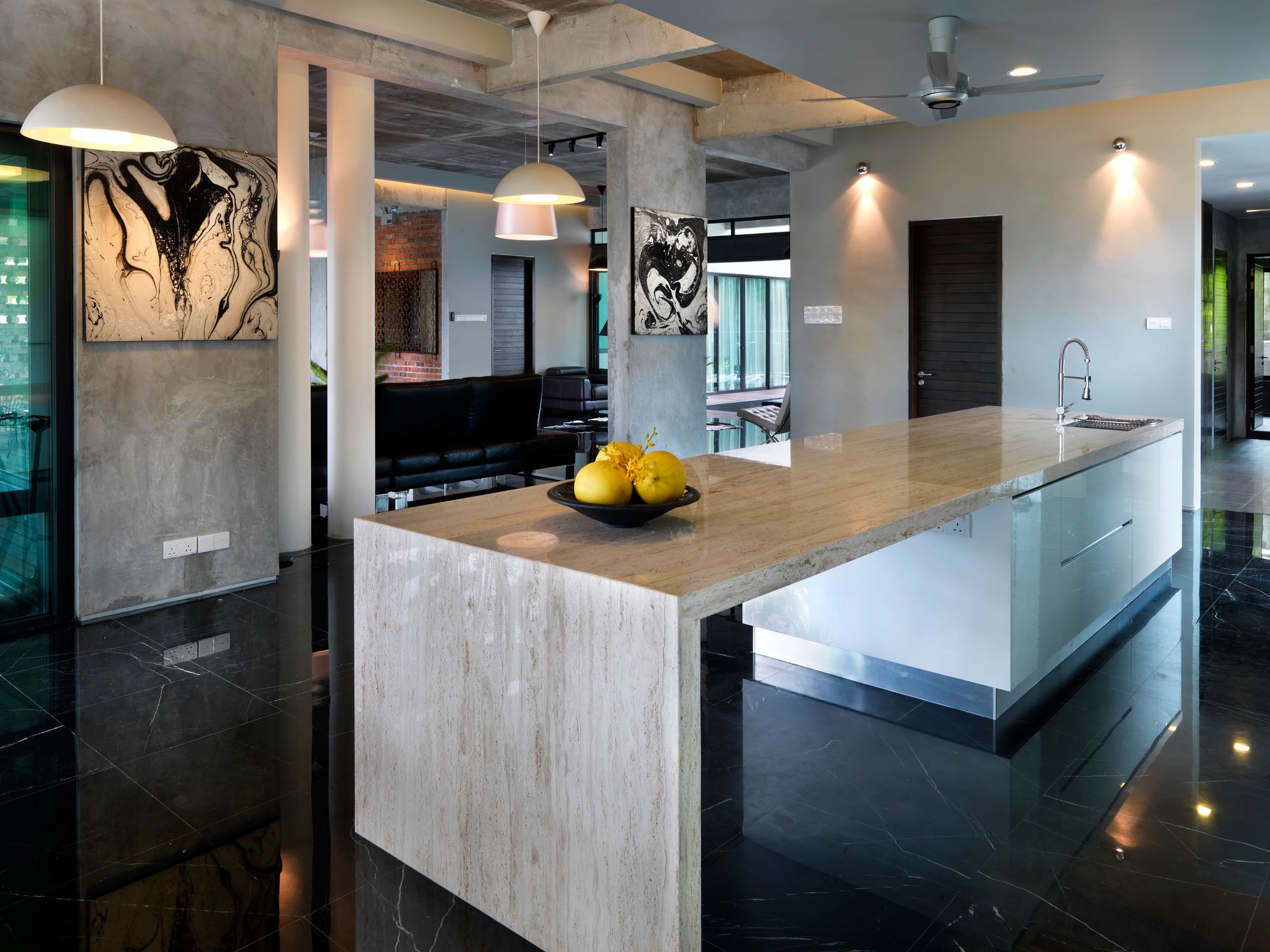S11 House by ArchiCentre
Location: Petaling Jaya, Selangor, Malaysia
Year: 2012
Photo courtesy: Lin Ho
Description:
The S11 house is located in an established older suburb of Petaling Jaya. The existing old house on the site was built in the early 1960’s and had become dilapidated and run-down over the years. A new green tropical house was planned for the site and conceptualized along the lines of a tree. The large tree canopy would cover and shelter the living spaces underneath it. The S11 House was designed to achieve the highest level Platinum rating of Malaysia’s Green Building Index (GBI).
There were five significant existing trees on the site. Three very old and sculptural frangipanis, a large star-fruit and a coconut palm tree. All these were retained and the new house was set in the midst of them. Much of the demolished old house materials were re-used. Old crushed concrete roof tiles for gravel fill, old clay bricks were cleaned and re-used for feature walls, roofing timbers were used for formwork strutting and propping, old steel were all sold off to steel yards, crushed concrete and cement aprons were re-used for backfilling aggregate.
The S11 house has a clear north-south orientation for all its openings and windows. The east and west walls were deliberately void of any significant glazed openings and were constructed of better insulated aerated light weight concrete blocks. In addition they were coated in heat reflecting paint in camouflage motif and also shaded by a wire netting screen wall of fruit and vegetable climbers. These would help to reduce much of the heat gain through the east and west walls.
The large tree-like canopy roof is constructed of lightweight recyclable profiled steel metal sheets coated in a light off-white colour to minimize heat absorption. The roof insulation comprises 200mm thick 50kg/m3 rockwool and two layers of heat reflective foil. A 200mm thick ventilated air space is left between the metal ceiling lining and the rockwool to further improve heat insulation. The overall roof U value is an impressive 0.14.
The glazing comprises 9.38mm thick low-E safety laminated glass with a 90% openable area. The overall building envelope OTTV is 29.63. A specially designed wind turbine combined with a steel framed glazed pyramid provides the house with “stack effect” ventilation and light pipes. These 15 numbers of turbines are driven both by wind as well as convection when the air within the glass pyramids heat up as a result of the greenhouse effect. A 3 degree differential is enough to spin the turbines by convection.
The large canopy roof is pitched at 5 degrees to facilitate self cleaning of roofing material and solar panels. A 5 KW peak photovoltaic installation is mounted unto the large canopy roof and the generated electricity is sold back into the national electric grid. The solar hot water heaters are also located on the large roof area. Rainwater collected on the canopy roof drains directly into the series of rainwater harvesting tanks. These are aligned in series for sedimentation control and the water from the last tank is used for all the toilet flushing, gardening and car washingrequirements.
All the tap fittings and sanitary wares have water saving and reduction valves. The majority of the house has bare natural finishes – raw off-form concrete walls and ceilings, cement plastered walls without paint and natural fair-faced common red clay brickwork. Stonework for bathrooms, driveway and Ground Floor living areas all come from project rejects. The timber flooring and upper decks are all Forest Stewardship Council (FSC) certified whilst the ground floor decking timbers are old recycled chengal collected over many years.
Limited surfaces are painted with Low VOC paints. All internal joinery work has low VOC content and also water based glues. The 1m X 1m modular book shelves are all made from recycled waste plywood off-cuts with low VOC coatings and water based glues. The modules are stackable and can be relocated with ease in the boot of a car. The double volume Family room is located on the first floor and the 7m high full sliding glass walls facilitate maximum cross ventilation whilst also opening up the entire internal living space unto the outdoor deck.
Lighting for the house are predominantly energy saving T5 tubes, LEDs and compact fluorescents. The house has full home office capability with Cat5 fibre-optics and broadband connections. The swimming pool and koi pond are located at the two extreme north-south ends and provide evaporative cooling for the house. Blackwater is treated in the onsite sewerage treatment plant and the recycled water is used for garden irrigation. A composting yard treats all the household organic and garden wastes and provides high grade compost fertilizer for the vegetable and fruit gardens. All new trees and plants are tropical natives that are generally maintenance free and suitable for the Malaysian climate.
Thank you for reading this article!



























